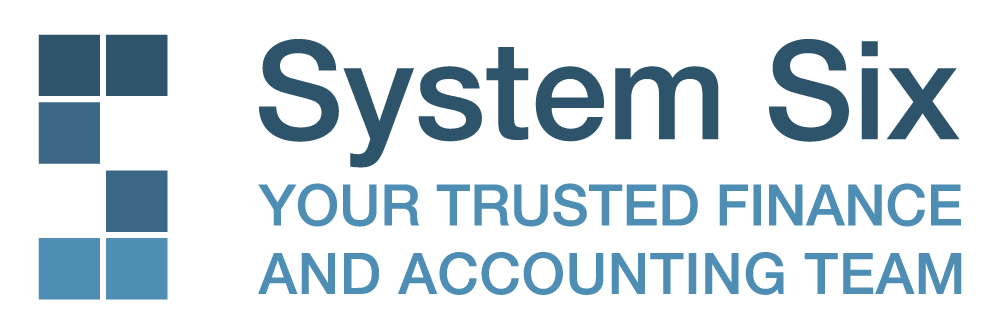So often, meetings can seem like nothing more than necessary evils or giant rocks weighing you down, stopping you from actually getting work done. This can be especially true if you are a team leader in your organization. It can often feel like you do nothing but jump from meeting to meeting and if the scheduled ones aren’t bad enough, there are always impromptu or last minute ones that pop up as well. How in the world can you possibly find time to accomplish anything? For the past 18 months, we here at System Six have been using a meeting cadence that has alleviated most of these pitfalls – and we want to share it with you!
Agendas Matter
We created a team meeting agenda that we stick to which allows us to work through company updates and issues together as a leadership team while not detracting from the other things we are working on. It helps us keep one another accountable, and also leads to far fewer rabbit trails as we go through the meeting agenda which in turn buys us more time. This meeting agenda,pictured below, is mostly based on EOS (Entrepreneurial Operating System) and a book called Traction. We added a personal check-in sales scoreboard, client headlines, and team headlines but we give all the credit to the book and EOS model for helping us design this google sheet. (Click to see the spreadsheet up close – if you want a FREE COPY of this Leadership Meeting Agenda, just click here!)

A Look into Our Meeting Structure
Meeting Management
We use this agenda for our Monday leadership call and the attendees represent each department of the company (Sales, Operations, Finance, Culture, Customer Service). One person is designated as the “call leader” and is responsible for running the meeting and keeping everyone on track. If we don’t designate a manager for the meeting we can easily get lost in the weeds. The overarching goal is to bring everyone in the organization into the loop on what’s happening, where our progress stands, and what needs to happen next.
Maintain Relationship
For this meeting we always start with relational connection. For us it’s ten minutes, allowing us to connect on the highs and lows of life outside of work. With this knowledge we can support one another during busy seasons and it also reminds us all that we are people, not just performers.
Review your Key Performance Indicators
From there we move into our scorecard section which is five minutes of sales updates, landed contracts, goal statuses, leading and lagging indicators and operational hiccups that lead to lost revenue. This gives us space each week to get on the same page about how the business is functioning in its quantitative elements. The scorecard section usually stirs some good conversation topics that we add to our IDS section below.
Know Your Big “Rocks”
After that we go into one of the main parts of the meeting which we call Rock Review. Here we check on our large quarterly goals which we call our “big rocks” (see, rocks don’t have to weigh you down!). Each team leader is responsible for 1-3 “rocks” per quarter, and this meeting is a weekly opportunity to check in, encourage and help one another with our big picture projects. These “big rocks” require our primary focus and attention so we allow ample time for this section. For each item we do a full review, check off completed tasks and tackle possible hiccups.

Headlines & Accountability
After the Rock Review we go on to further agenda items. We spend a short and sweet five minutes on client “headlines” where we update one another on how clients are doing and then do the same with team “headlines.” We move from there to our To-Do List from the previous week which is not only an accountability check, but also a chance to address any roadblocks team members may be facing with their To-Do’s.
Rather than spending time throughout the week notifying each other of headlines with either clients or team members, we all know that we have this standing weekly meeting where all of those topics will be discussed. This keeps the overall weekly “noise” level down and we can trust that there is time and space to discuss these things every five business days.
Identify, Discuss, Solve
What follows next is the main section of the meeting, IDS (Identify, Discuss, and Solve—credit Traction). For this portion of our time together—45 minutes—we bring up company issues and rank them by importance. To do this each team leader gets five votes and chooses which topics are highest priority for them. The items with the most votes go to the top of the list, those with the least are bumped down to the bottom. This way we are working on issues that are critical to the company as a whole, not to just one person’s portions. We get through as many elements on the list as possible knowing that the rest will carry over to the next meeting. Out of this IDS time comes our to-do list for the following week. Our team knows they will be checked on for these items in the next meeting so it is a good reminder of exactly what is on each of our plates going forward.

Always Improving
To finish we end with rating the meeting. Each team leader rates the meeting on a scale of 1-10 and if there is a 7 or lower, the call leader asks that person why they gave that particular rating. That team leader then has an opportunity to explain their rating and it is a chance for us all to hear that and improve the meeting for next time.
Once the meeting is done the call leader copies the agenda, pastes below and then clears the solved issues, clears off completed to-dos, moves to-dos from this week to last week and makes sure the agenda is prepared and “fresh” for the next week. A clean slate! Something we can all—and especially the next week’s call leader—be grateful for. Throughout the week leaders can add topics directly to the IDS section of this newly created agenda. So instead of blasting an email that says “Guys, we have an issue we need to discuss,” that person can put the issue on the agenda and know it will be covered during the next meeting.
Know Your Meeting “Why”
The main goal for this meeting and for sticking to the agenda so closely is communication and connection. We are able to stay in the loop with each other, with team members, with clients and with whether or not goals are being met. This meeting allows us to avoid having to do daily calls and makes a huge difference in being able to better keep everyone’s respective time budget. Having a predictable meeting template has been critical to our success. Not having clear guidelines for how a meeting will run or what should be included just leads to confusion, frustration, and miscommunication.
Don’t be afraid to get critical about how and why you meet! Hopefully with some strategy, your business can find a cadence for your own leadership meetings that will motivate your team to reach its full potential.
If you’d like a free copy of our Leadership Meeting Template, just click HERE!




